By Neena Bhandari
Sasan Gir (India), 22.03.2008 (The Sunday Age): A lion’s thunderous roar penetrates the quiet, sending me into a spin. The red numerals on the bedside clock are fuzzy at 0400 as I fumble for the torch. A second roar reverberates through the lodge and I try to muffle the sound with a pillow, but all vestiges of sleep have vanished. Fear and excitement grip me at the thought of my first date with the king of the jungle.
Gir wildlife sanctuary in the western Indian state of Gujarat is today the last home of the Asiatic lion, which once roamed from Asia Minor and Arabia through Persia to India. Growing human population, loss of habitat and hunting drove the species to the brink of extinction and by the end of the 19th century, the then Nawab of Junagadh, a local monarch, estimated the number of lions at just a dozen in the Gir forests. The Nawab’s and subsequent conservation policies have raised the number of lions to 359, according to the 2005 census.
So with stars illuminating the sky, we queue at the forest booking office with other tourists and wildlife enthusiasts to hire one of the many jeeps for the guided safari.

As we made our way into the sanctuary, pawprints of a male and female lion along the forest road convinced us that the lion would give an audience. Spotted deer calls, restless langurs (slender, long-tailed monkeys) and peacocks broke the air as I headed towards my first date with the panthera leo persica.
As we drove, an undulating terrain with a rich mix of deciduous forests, grasslands, scrublands and water bodies unfolded before us. This 1412-square-kilometre mosaic of habitats harbours 38 species of mammals, 32 reptile species, 10 amphibian species, 3000 birds and 500 plants, 2000 insects and lesser-known fauna.

The meadows are home to herbivores such as spotted deer, sambhars, blue bull (Nilgai antelope) and 461 Indian gazelle. An amazing chain of interdependence exists among the residents; if you see a troop of langurs in a tree, you’re sure to find a herd of spotted deer below.
Prey abounds for the lions and the 311 leopards: wild boar, flying foxes, wild cats, jackals and striped hyenas. The sanctuary is also home to the world’s only four-horned antelopes.
We stop near a water hole surrounded by a herd of wild buffaloes, the main bait for lions. Our guide, Bhavesh Lakhani, whispers that there are all the telltale signs of a lion in the vicinity. In the stillness, I can hear my son breathing heavily and feel his grip tightening on my hand.
A herd of spotted deer run past the vehicle, stopping momentarily to have a good look at us. Suddenly, an ominous silence descends and our driver points to the thick foliage on the right. Trepidation gives way to elation as we see a lion stealthily move across the carpet of dried teak leaves. He crosses the road a few feet ahead of us, stops and turns his head for that perfect shot. In the distance, peering through the binoculars, I see a mother and cub.
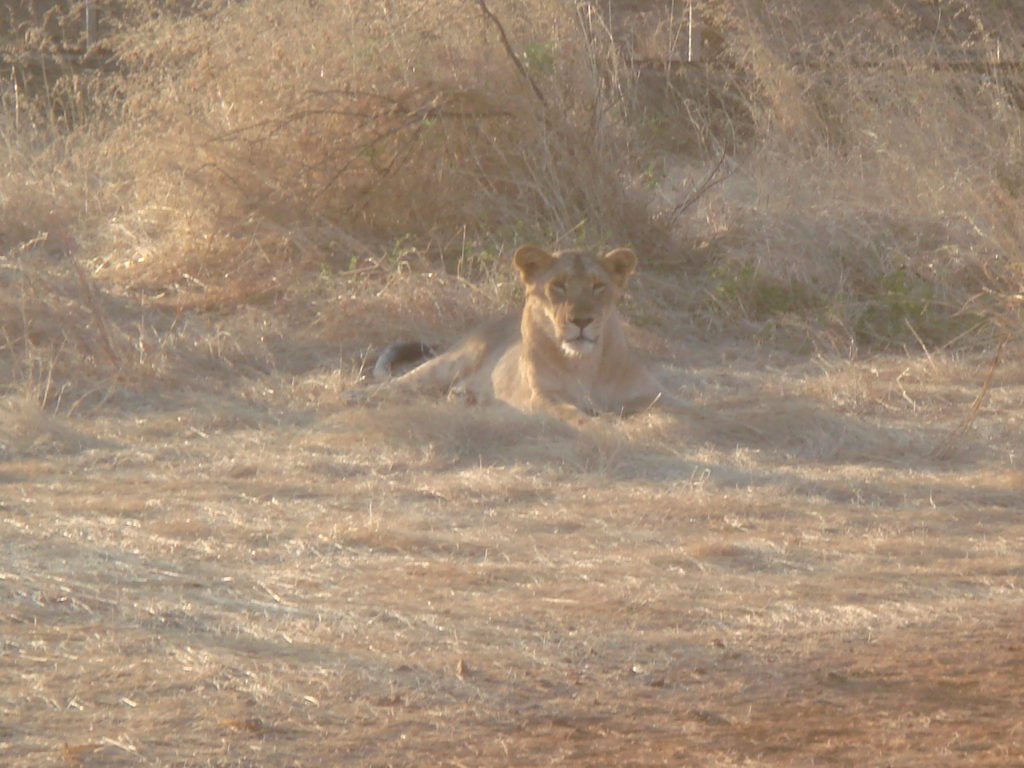
I am spellbound. A lion exudes vitality and charm, standing its ground, curious and unafraid. The Asiatic lion is a sub-species and has evolved from the African lion, having separated from the base stock about 100,000 years ago. It is slightly smaller and its mane shorter than its African cousin, and with a distinctive fold on its belly. Mission accomplished, we drive along Kamleshwar dam, where families of sandgrouse race, balancing on the rim of the dam; two purple moorhen glow in the morning sunshine. It’s a birdwatcher’s paradise: I spot drongos, paradise flycatchers, bush quails, cuckoos, white-necked storks, warblers, blossom-headed parakeets, golden-backed woodpeckers, kingfishers, Indian pittas, darters and herons. Raptors such as crested hawks and crested serpent eagles circle overhead.
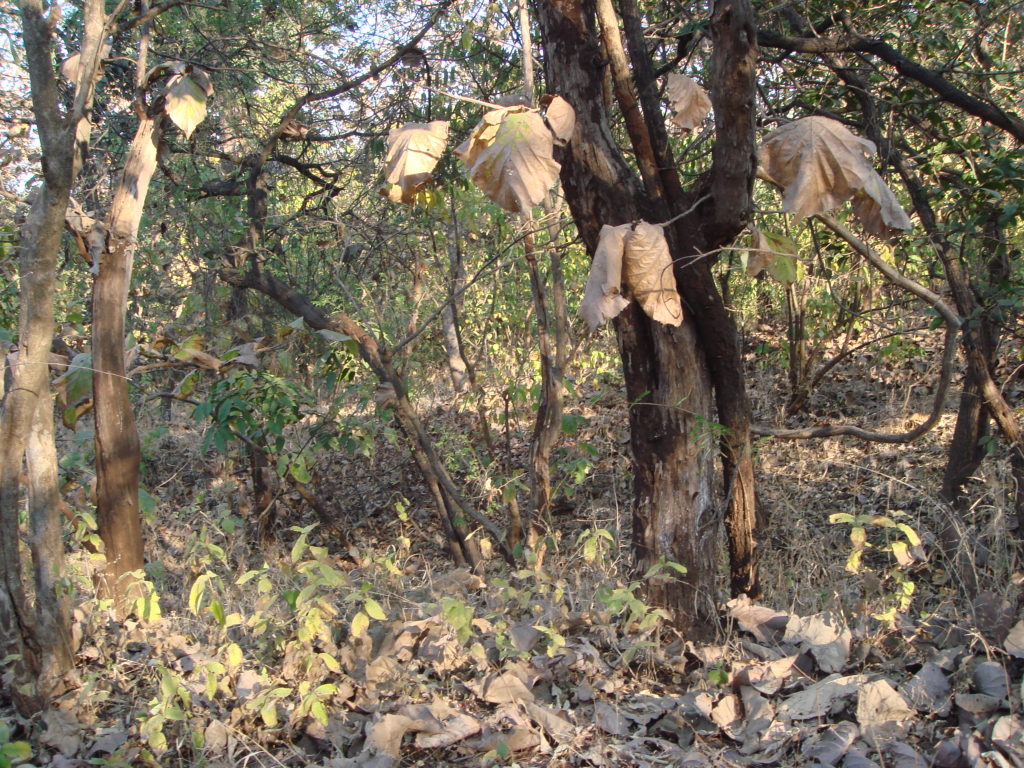
The river harbours a large population of marsh crocodiles and we are fortunate to see a mother and baby crocodile snuggled on the rocks in the distance, their scaled backs gleaming in the sunshine. The reptilian fauna in the sanctuary includes the star tortoise, the monitor lizard and a number of species of snakes, including the python.
Forest management in India creates truly wild places, where men and animals vie for space. In the buffer zone, we drive past tribal Maldhari settlements located along valleys.


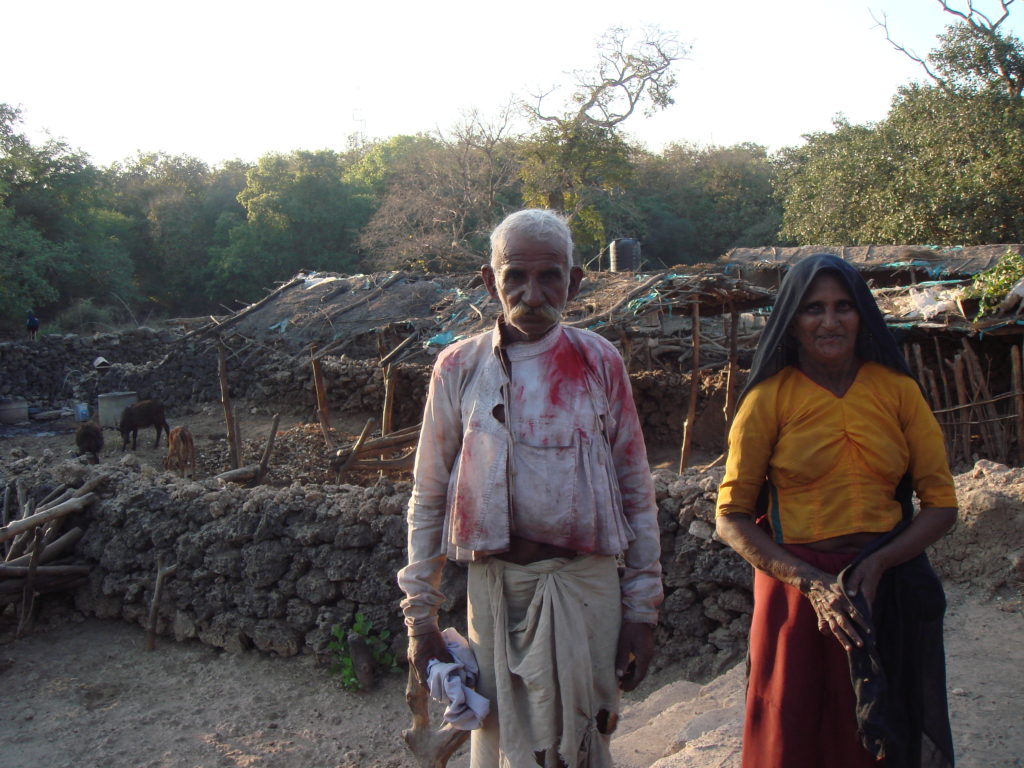
For generations, the Maldharis have learned to co-exist with the lions and other predators forming an integral part of the Gir ecosystem, but with territory in short supply, lions now prowl the periphery of the forest, dense with sugar cane, mango and peanut cultivations, often clashing with people and their livestock.
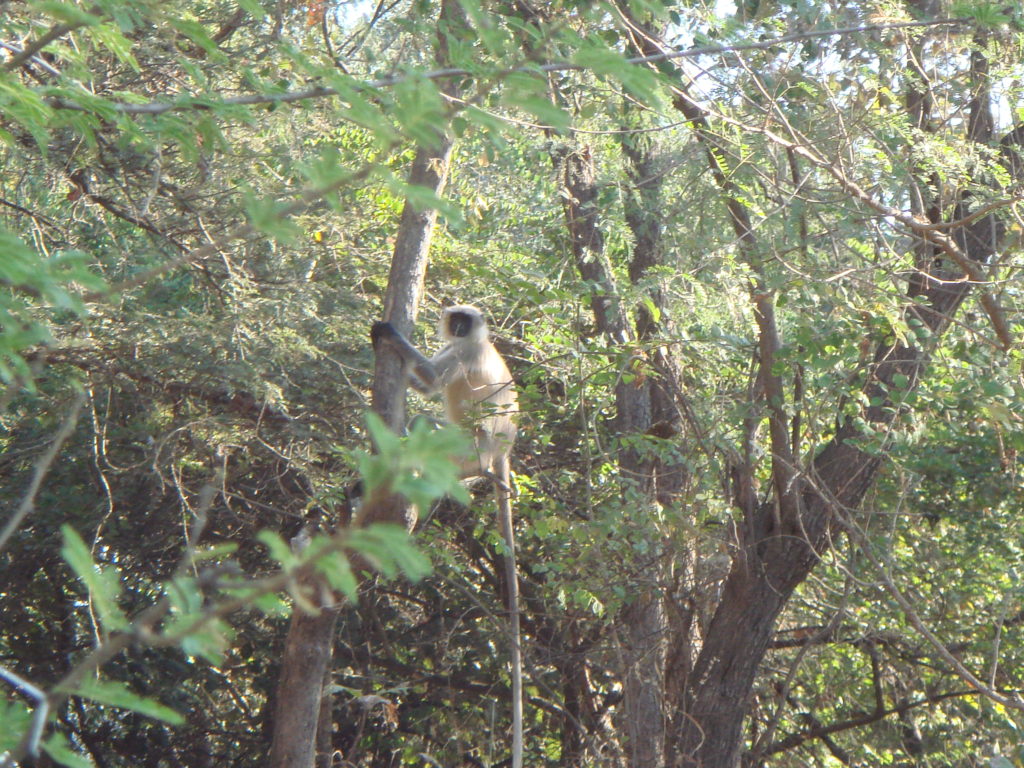
Contented, we return to our breakfast banquet at the Gir Birding Lodge, located at the entrance of the sanctuary, which echoes to the chirping of birds of all hues and sizes. A huge thud makes my heart miss a beat: a langur lands on the railing only a foot away.
Should you fail to spot a lion on safari, the interpretation centre in Devaliya, 13 kilometres from Gir, provides a close-up glimpse.
But, interesting as the display is, little can beat the thrill of seeing a lion in the wild and, as night descends, an occasional roar splintering the silence of the forest emphasises our distance from the hubbub of city life.
GETTING THERE
Air: The nearest airport is Rajkot (160km), connected with Mumbai by Indian Airlines & Jet Airways. Qantas has direct flights to Mumbai. Rail: Sasan railway station is on the meter gauge line; however, a convenient railhead is Junagadh (54km) or Rajkot, which is well-connected to Delhi and Mumbai. Road: Regular bus routes operate from Sasangir to Mumbai (802km) and Ahmedabad (408km). Local transport: Jeeps can be hired from the Forest Department, Sasangir.
SEASON
The sanctuary is open to visitors from October 16 to June 15; 6.30am to 11am and 3pm to sunset.
FEES
Entrance and vehicle fee: approximately $A15 and $A25. Guide fee: $A2 for first 3 hours, plus tip.
ACCOMMODATION
The Gir Lodge (Taj Group of Hotels), tajhotels.com; Gir Birding Lodge, girnationalpark.com; Maneland Jungle Lodge, maneland.com
Sinh Sadan guesthouse is run by Sasangir Forest Department, +91 2877 285540/285541
WEBSITES
NOTE: India has recorded a 29 per cent increase (from 523 in 2015 to 674 in 2020) in the population of Asiatic lions in Gir in the past five years. The period also saw a 36 per cent increase (from 22,000 sq km in 2015 to 30,000 sq km in 2020) in the distribution area of the lions.
© Copyright Neena Bhandari. All rights reserved. Republication, copying or using information from neenabhandari.com content is expressly prohibited without the permission of the writer and the media outlet syndicating or publishing the article.

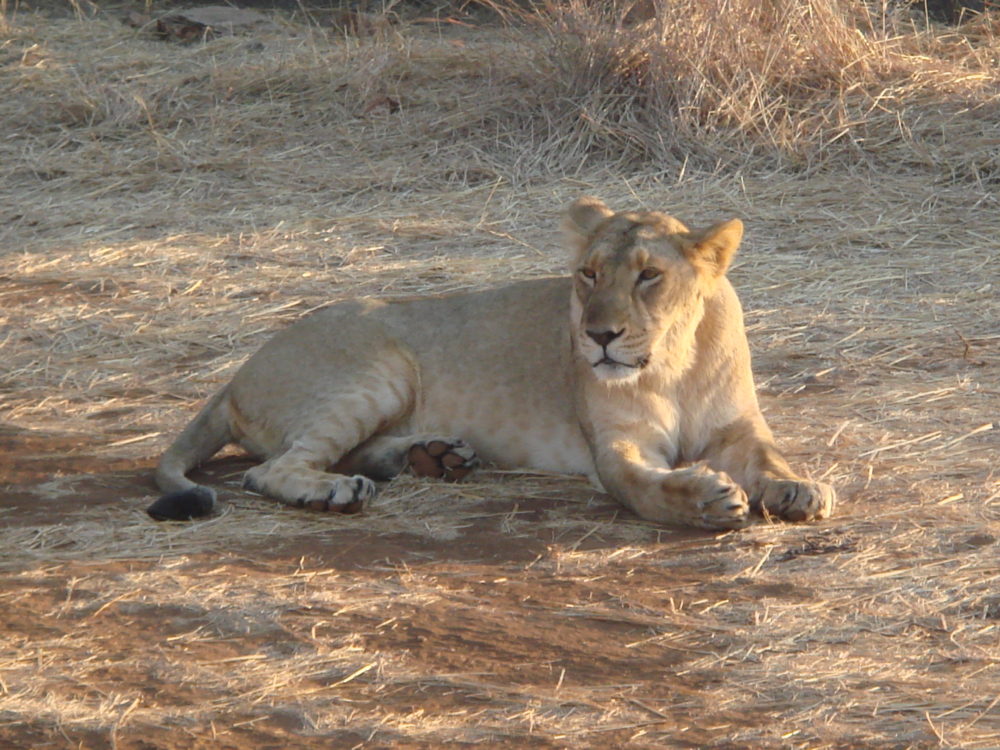



Fantastic.